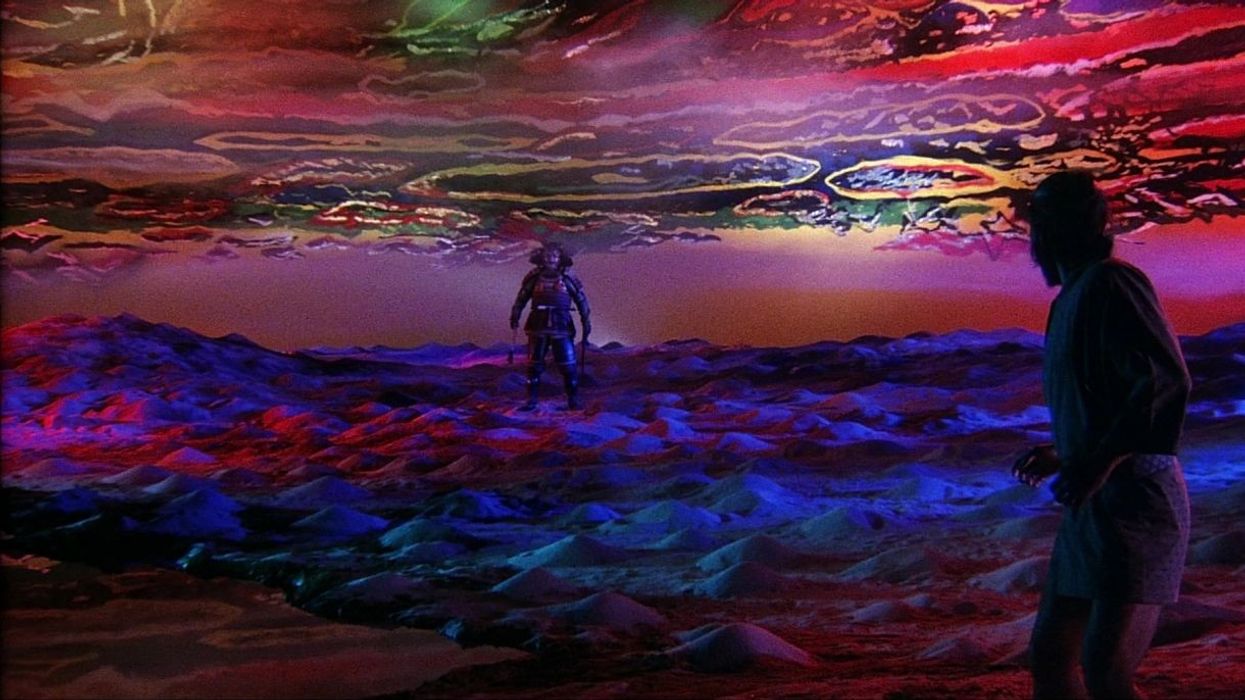Watch: Exploring the Symbolic Use of Color in Akira Kurosawa's Films
Though his most famous work was done in black and white, Akira Kurosawa used color like no other filmmaker before or after him.

1970 was a big year for director Akira Kurosawa, because it was the year his first color film, Dodes'ka-den, was released. Up until this point, the Japanese filmmaker mesmerized audiences with his brilliant black and white films, including Rashomon, Seven Samurai, and Yojimbo, however, utilizing his expertise as a painter, the world was introduced to a kaleidoscopic imagination that had been hidden in achromaticity for 27 years. Philip Brubaker explores Kurosawa's transition to color in this Fandor video essay.
When Kurosawa made the transition from black and white to color, he really transformed. In a Wizard of Oz-on-LSD kind of way, the director injected vibrant primary colors into his work, sometimes channeling his inner expressionist and splashing them everywhere or sometimes being very measured and carefully painting them. Either way he did it, he did it with a purpose.
Kurosawa infused symbolism into his use of color in order to communicate with his audience. As Brubaker states in his video, warm colors were a symbol of danger and inappropriate passion, while the yellows and reds in the Ran battle scenes represent courage and blood respectively.

However, it wasn't just about symbolism. Kurosawa, a trained painter, understood that a viewer's eye would be drawn to the brightest, boldest color in a composition, which is a technique he often used in his later films. Simple but important props, characters, or areas of the frame would be highlighted with a bold color in order to separate it from the rest of the composition, silently guiding the audience's gaze to whatever Kurosawa wanted them to pay attention to.
In the end, Kurosawa was a master filmmaker not only because he understood composition, editing, and storytelling, but because he understood humanity and the psychological relationship to the things we observe in our world. Understanding the craft is only one piece of the puzzle; understanding the human condition is another.
Source: Fandor Keyframe











